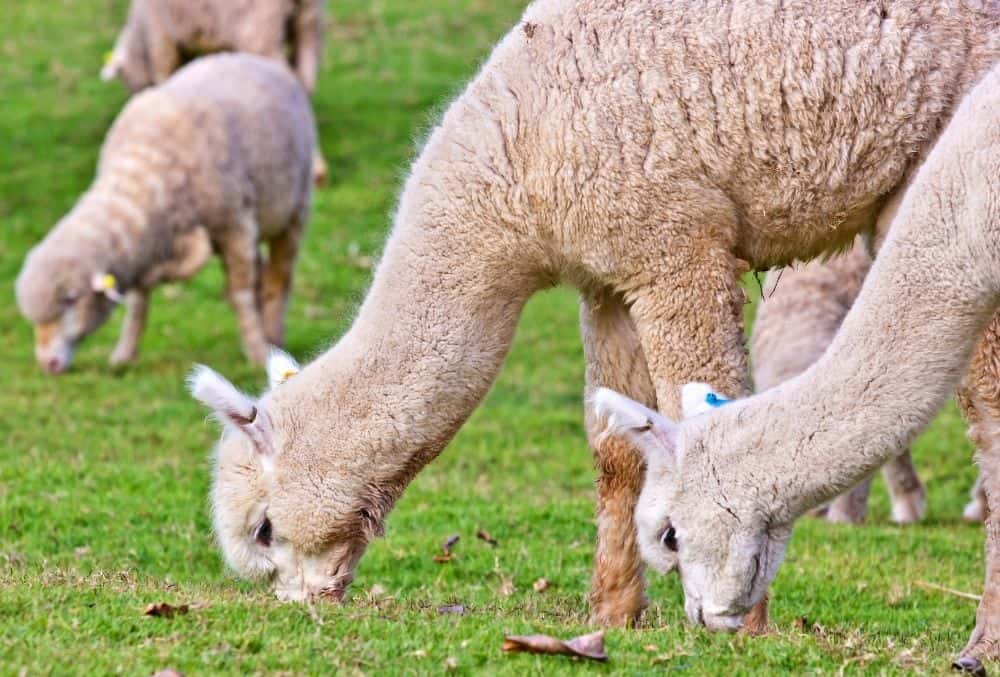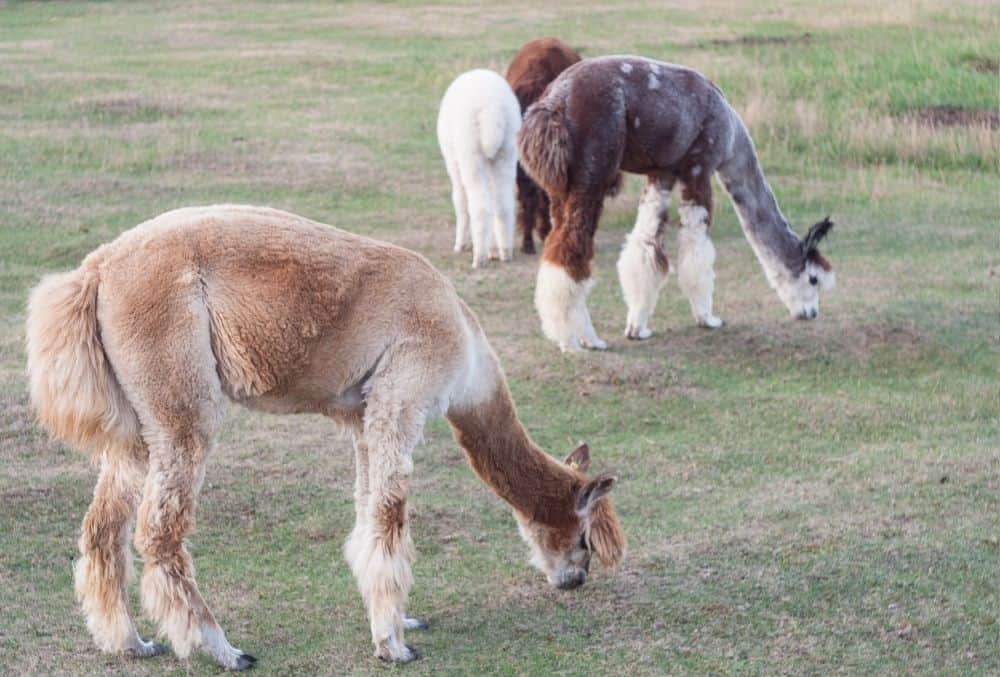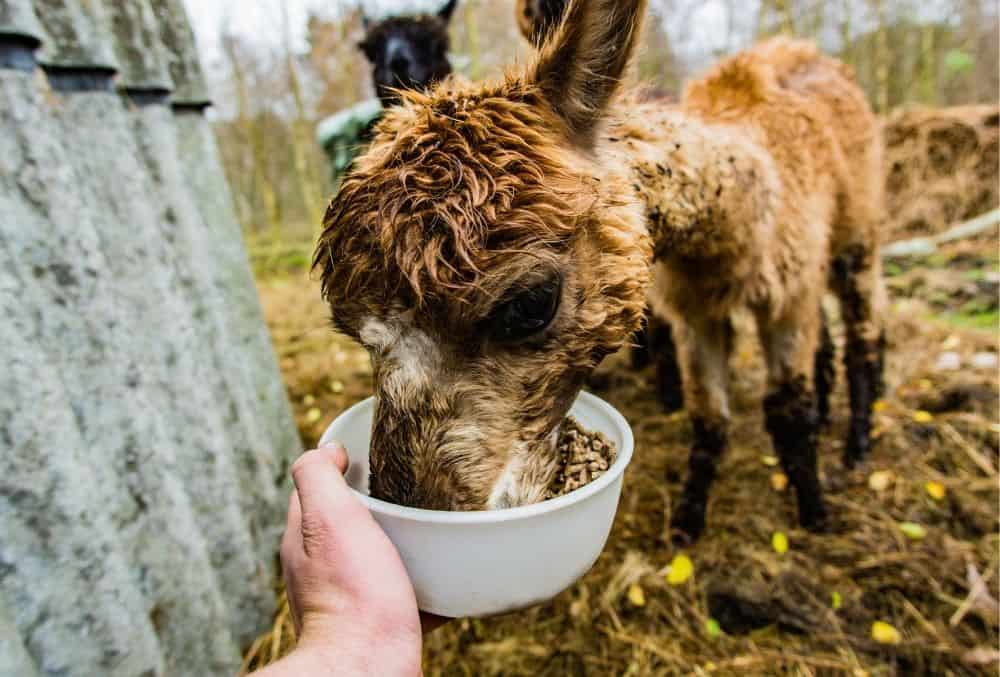When most of us think about alpacas, we tend to think about their soft wool which has gained popularity over the years thanks to the knitting boom.
Although the main production of alpaca fiber remains in South America still, its popularity for the stuff has taken it across the globe.

Originally they were part of the Andean civilisation where the alpacas gained favor with the Incas because the fiber from the alpaca was used to produce cloth.
This was worn by nobility exclusively and was championed throughout because of its quality and silkiness.
Alpacas today may be considered as ‘pets’ by some due to their kind nature and the fact their padded feet will not cause as much damage as regular hooves.
They can be kept in small-holdings or as commercial herds ready for fiber production. This means that you can use the fiber as a way to either make your own wool to use, or to start a business selling your own wool or fiber.
Whether you are curious about the alpaca diet or are interested in owning one – or several – you have come to the right place.
Hopefully this helpful guide will give you all the interesting information you need.
The Alpaca Digestive System
You could point out the fact that there are similarities between the alpaca and a ruminant mammal like a cow, but the alpaca actually only has 3 stomach compartments and not 4.
They are called C1, C-2 and C-3. For this reason, an alpaca normally gets called a pseudo-ruminant. So, what do the 3 compartments do?
Compartment 1 & 2
To put it simply, the first 2 compartments are where the fermentation happens. Simple carbohydrates like starch and sugar, alongside complex carbohydrates like fiber get broken down here.
This is done by a microbial population which produces fatty acids.
This then provides energy for the alpaca.
Compartment 3
Normally referenced as the true stomach, the 3rd compartment is a place where enzymes and different acids are produced to digest food, very similar to that of a human.
Unlike with cows, the first two compartments of the alpaca’s stomach are not lined with papillae (fingeresque projections on the surface which absorb volatile fatty acids), but instead have a number of gastric pits.
These produce a few digestive enzymes that help the job of the microbial fermentation.
What Do Alpacas Eat?
Just like with any animal (or person), the better they are fed, the happier and healthier they will be.
An alpaca is a herbivore, so do not tend to eat meat and instead love things such as grass, plants and natural items.

We are talking about wood, stems, bark, leaves and even hay.
This forms a large bulk of their diet and it can all be easily digested because of their 3 compartments within the stomach.
An alpaca makes sure to use its food energy wisely, and this is because they evolved from harsh conditions weather-wise. They do this a lot more than other land-living animals such as sheep.
In some countries alpacas will need extra help with their food due to bad grass conditions which may not be providing the nutrients that they need to stay healthy.
In this case, they will rely on something like hay.
The fiber in food which contains a ‘woody’ ingredient like straw can take a while to ferment, taking a number of days to finally break down.
On the other spectrum, starch and sugars can ferment very quickly. Because of how rapid this is, there will be a sudden increase of volatile fatty acids.
This is something that generally wants to be avoided because it can impair and even kill bacteria that is beneficial within the alpaca’s stomach.
Not only that, the damage on the alpaca may result in loss of appetite and diarrhoea, to something more serious like death.
If you are looking to change the diet of an alpaca, do it overtime. This is because the microbes in the gut need time to adjust to any changes when it comes to food.
What About Treats And Mixes?
Even though alpacas will generally be eating all the nutrients it needs already, you can also buy ready mixes that are rich in certain nutrients that have been formulated especially for them.
They will have extra minerals and vitamins so you can be rest assured that the alpacas are being fed well.
It is even suggested that you use a mix on top of their grazing eating habits to top up on any vitamins, etc.

Just like with us, alpacas love a treat and why wouldn’t they? Cutting them into small pieces to avoid choking, the alpaca loves to eat apples, carrots, turnips and broccoli stalks.
Even though animals like sheep like a mineral lick, this is not generally needed as a standalone thing for an alpaca. They prefer to drink water from a lick based in a bucket.
Keep Alpacas Hydrated
Because they become easily dehydrated during dry and windy weather, it is best to make sure they have a constant supply of water.
You may find an alpaca will not drink freezing cold water during the winter, so add some hot water to it so the water can warm up.
This will also stop the water from freezing over when it gets particularly cold, so keep an eye out in case it freezes over and you need to break it.
Roundup
Alpacas are wonderful animals that can be kept in a small-holding or on a larger scale for fiber production, which is handy if you would like to start a business.
Their stomach contains 3 chambers that do different jobs, but mainly will take in natural food such as grass and plants, and even a specialized alpaca mix that you can buy.
Giving the alpacas treats will likely keep them happy and full of energy, but remember to cut them into small pieces to avoid choking.
The alpaca is a popular animal for many reasons, but even if you are happy to give away their fiber for free, they will bring you a lot of joy just by being in their company.
